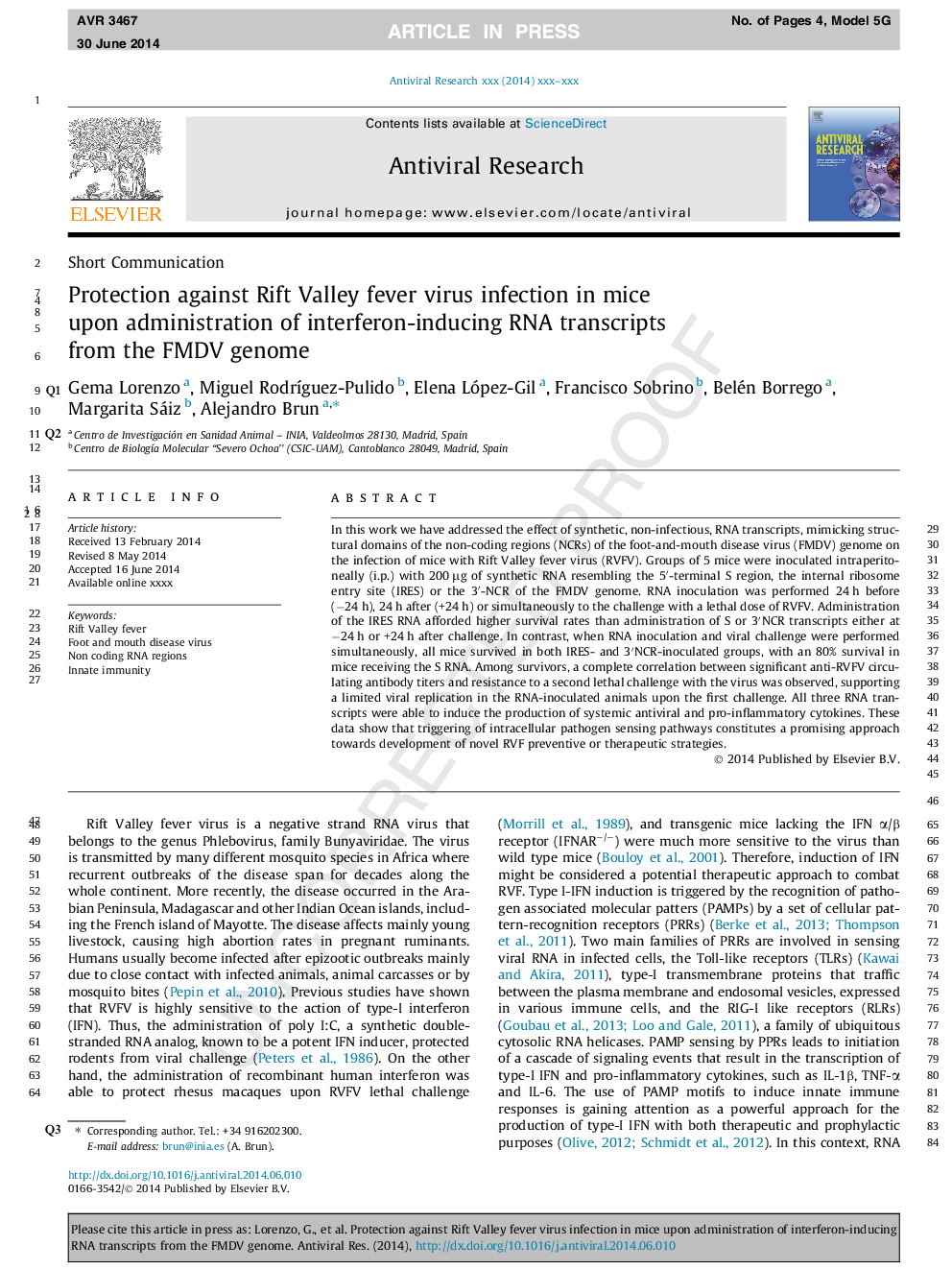| Article ID | Journal | Published Year | Pages | File Type |
|---|---|---|---|---|
| 5822182 | Antiviral Research | 2014 | 4 Pages |
Abstract
In this work we have addressed the effect of synthetic, non-infectious, RNA transcripts, mimicking structural domains of the non-coding regions (NCRs) of the foot-and-mouth disease virus (FMDV) genome on the infection of mice with Rift Valley fever virus (RVFV). Groups of 5 mice were inoculated intraperitoneally (i.p.) with 200 μg of synthetic RNA resembling the 5â²-terminal S region, the internal ribosome entry site (IRES) or the 3â²-NCR of the FMDV genome. RNA inoculation was performed 24 h before (â24 h), 24 h after (+24 h) or simultaneously to the challenge with a lethal dose of RVFV. Administration of the IRES RNA afforded higher survival rates than administration of S or 3â²NCR transcripts either at â24 h or +24 h after challenge. In contrast, when RNA inoculation and viral challenge were performed simultaneously, all mice survived in both IRES- and 3â²NCR-inoculated groups, with an 80% survival in mice receiving the S RNA. Among survivors, a complete correlation between significant anti-RVFV circulating antibody titers and resistance to a second lethal challenge with the virus was observed, supporting a limited viral replication in the RNA-inoculated animals upon the first challenge. All three RNA transcripts were able to induce the production of systemic antiviral and pro-inflammatory cytokines. These data show that triggering of intracellular pathogen sensing pathways constitutes a promising approach towards development of novel RVF preventive or therapeutic strategies.
Related Topics
Life Sciences
Immunology and Microbiology
Virology
Authors
Gema Lorenzo, Miguel RodrÃguez-Pulido, Elena López-Gil, Francisco Sobrino, Belén Borrego, Margarita Sáiz, Alejandro Brun,
